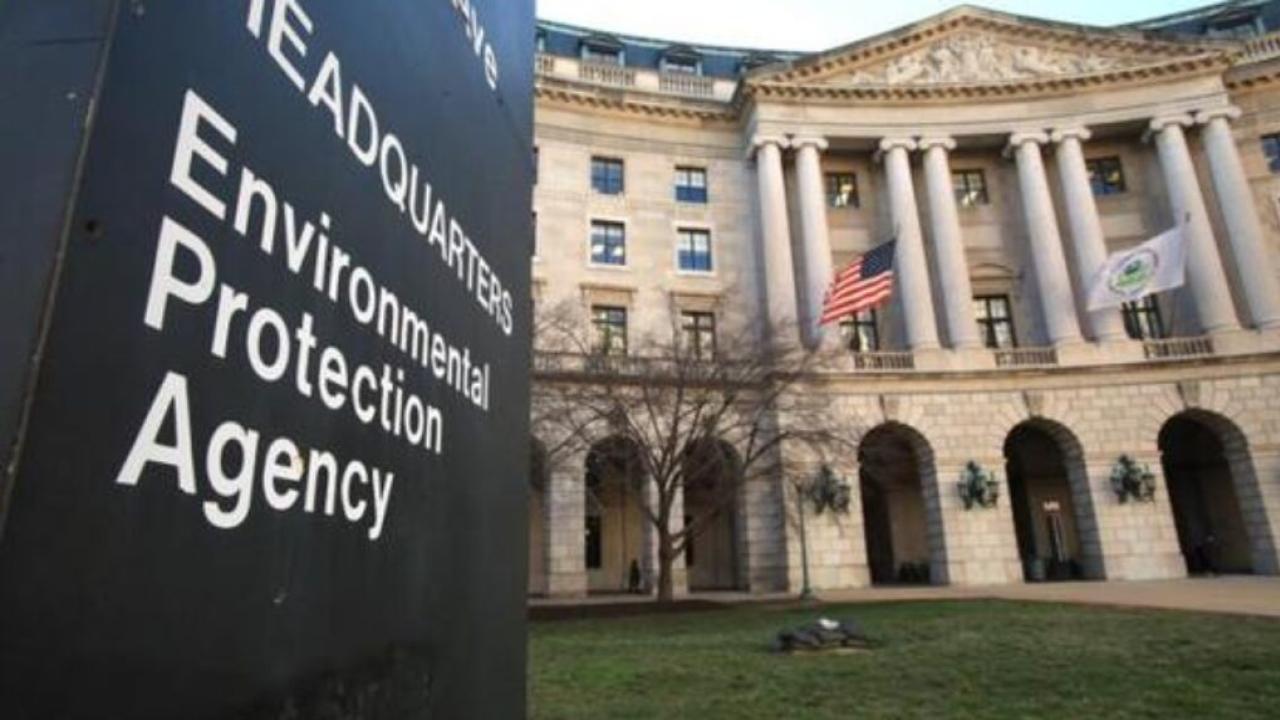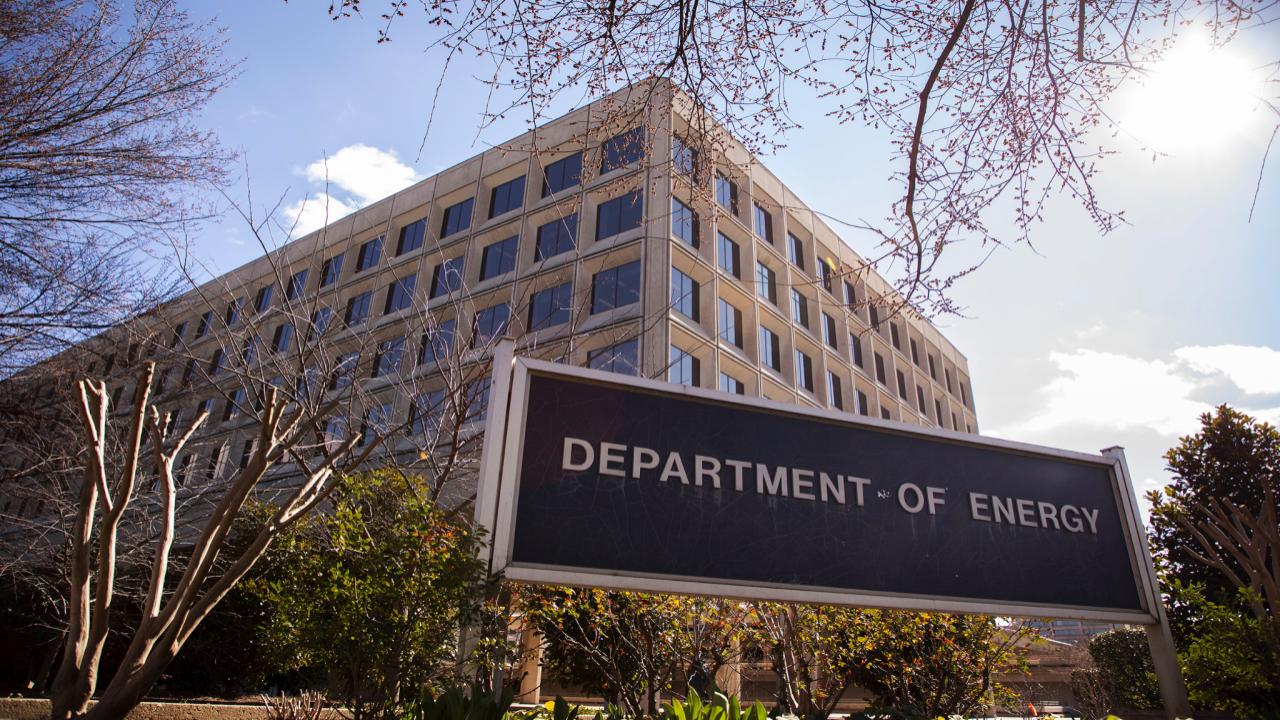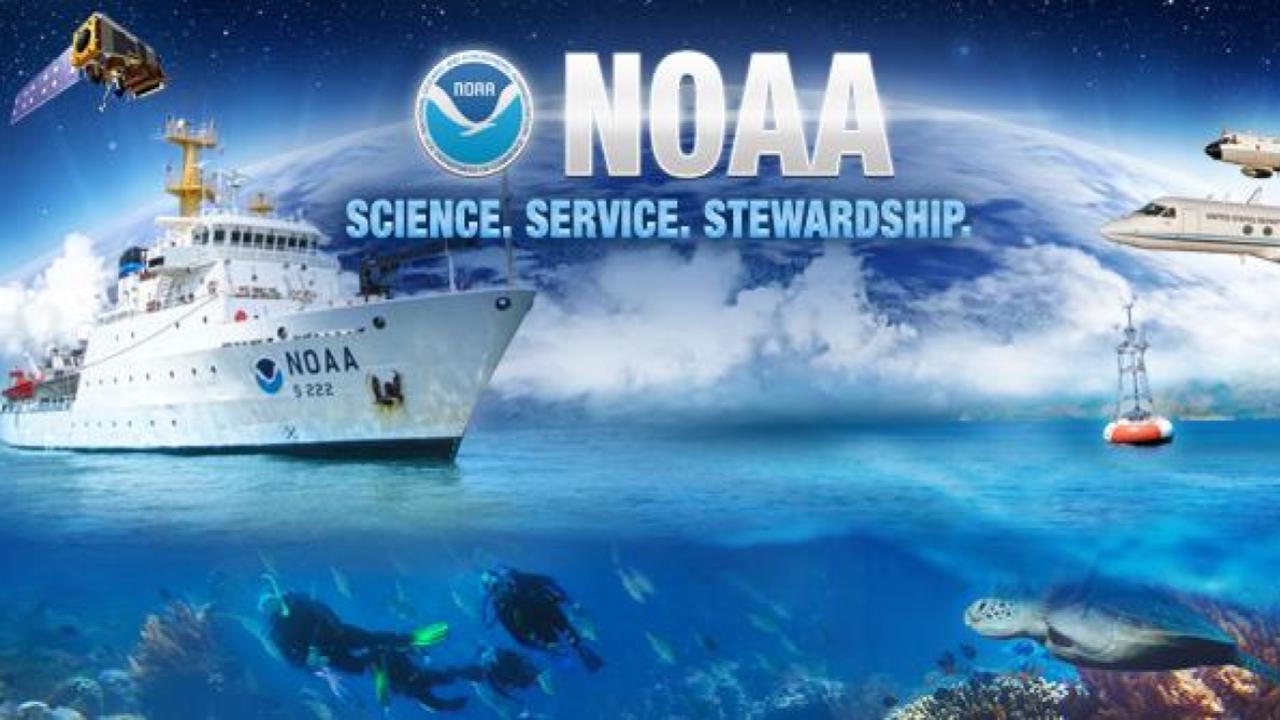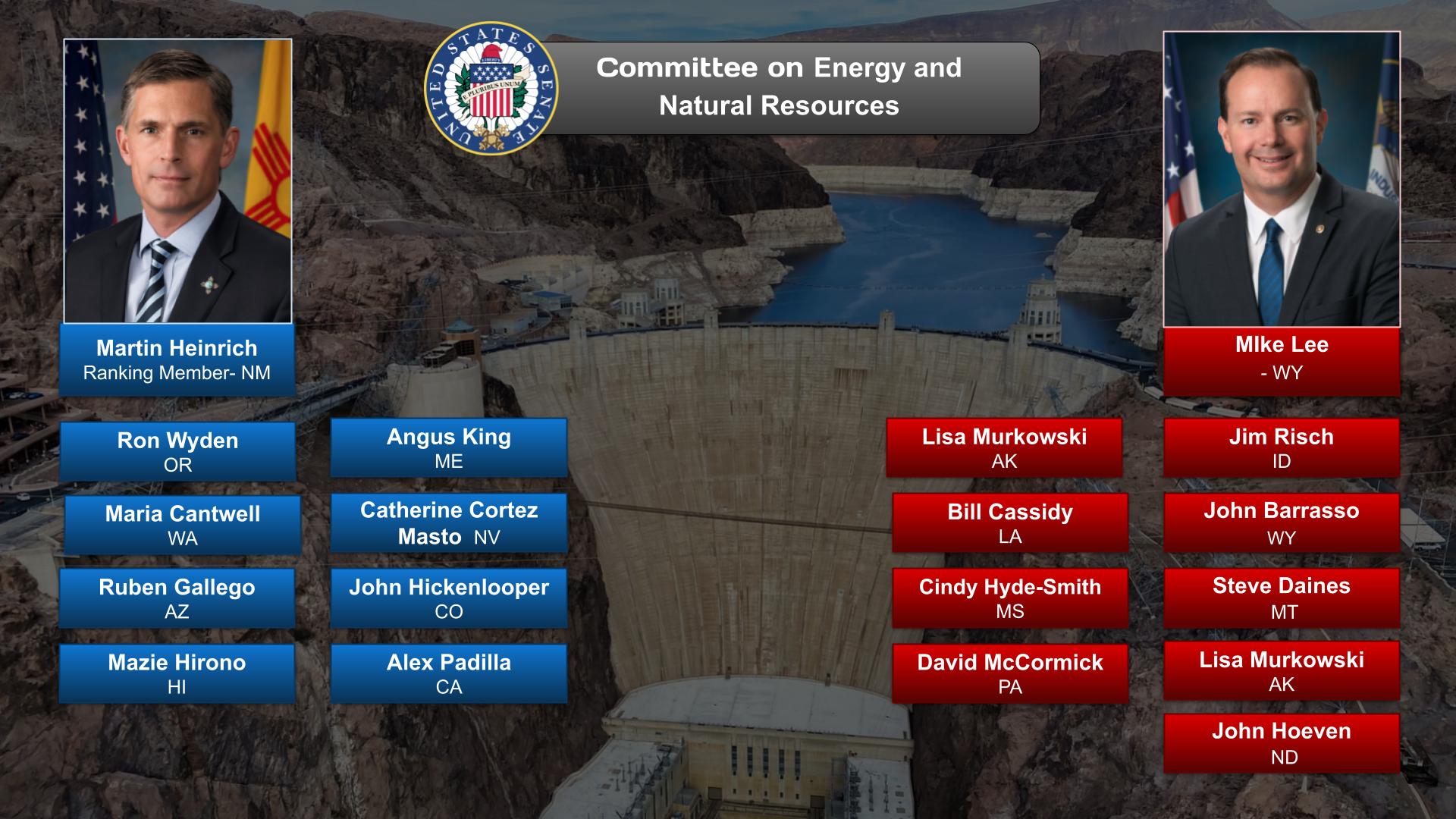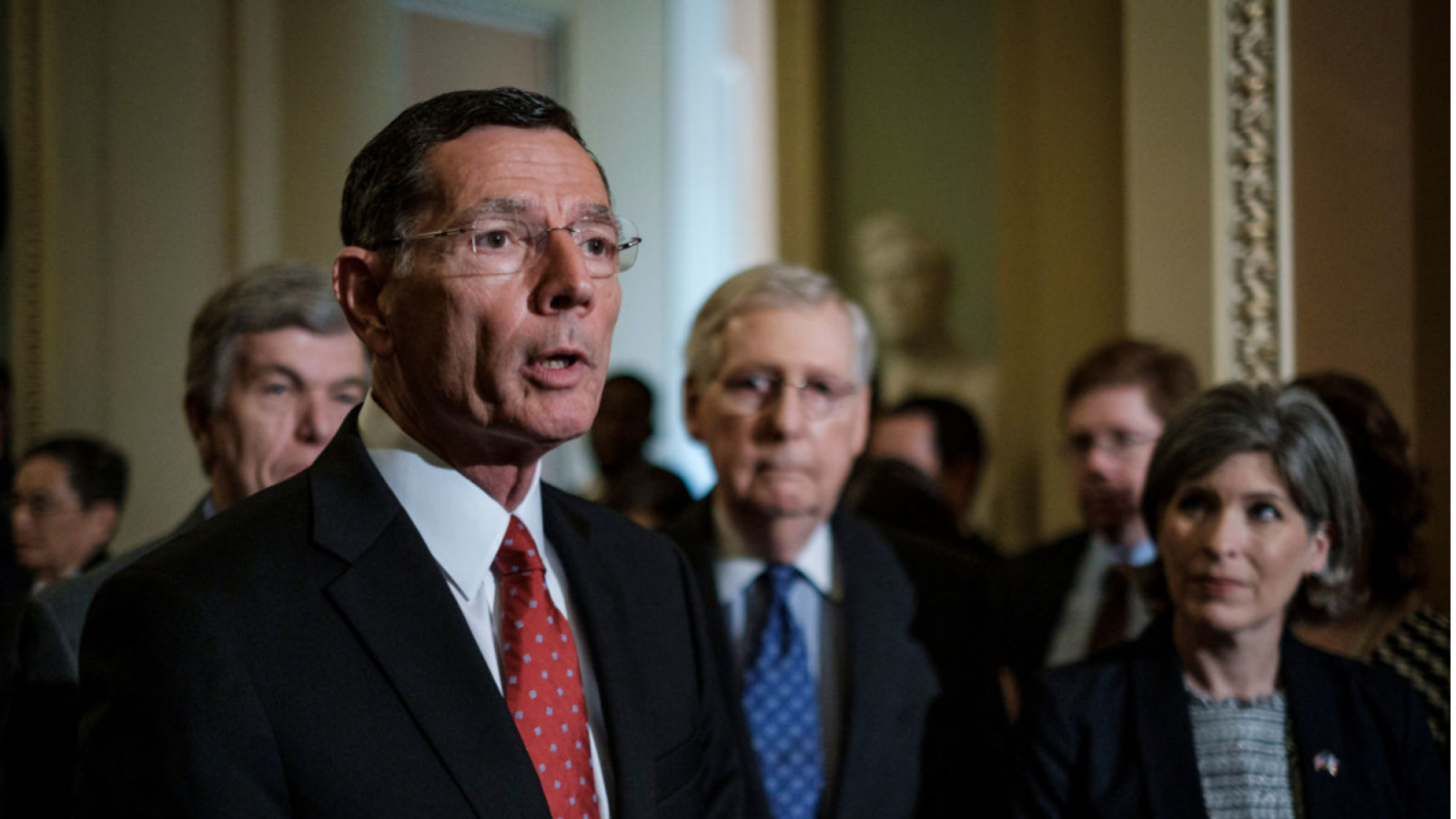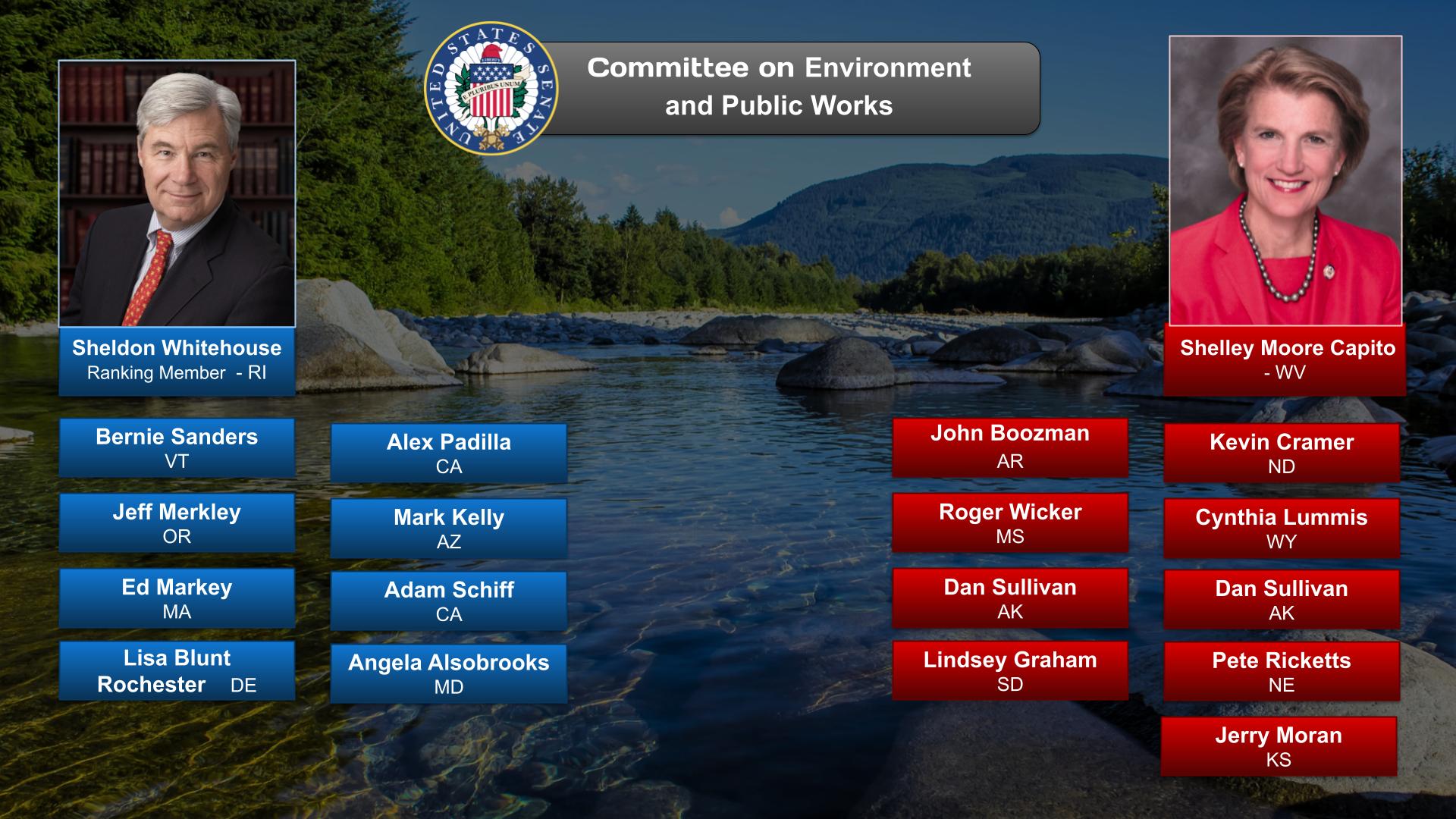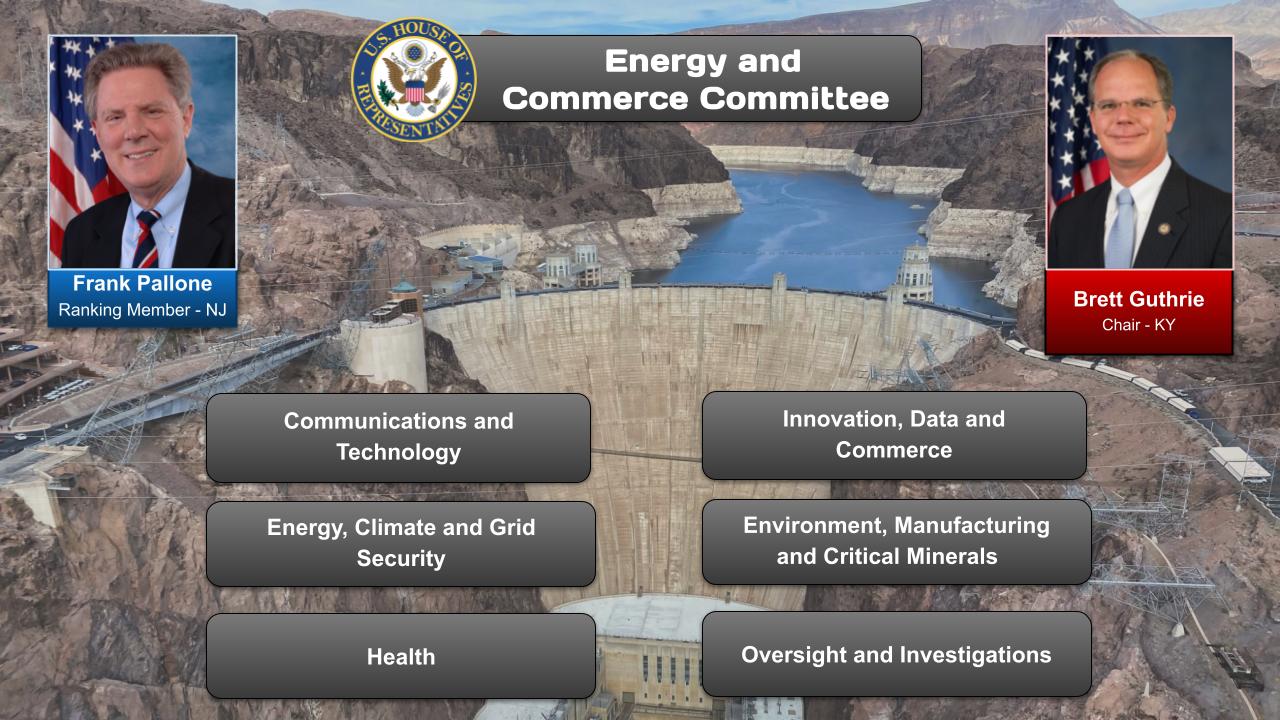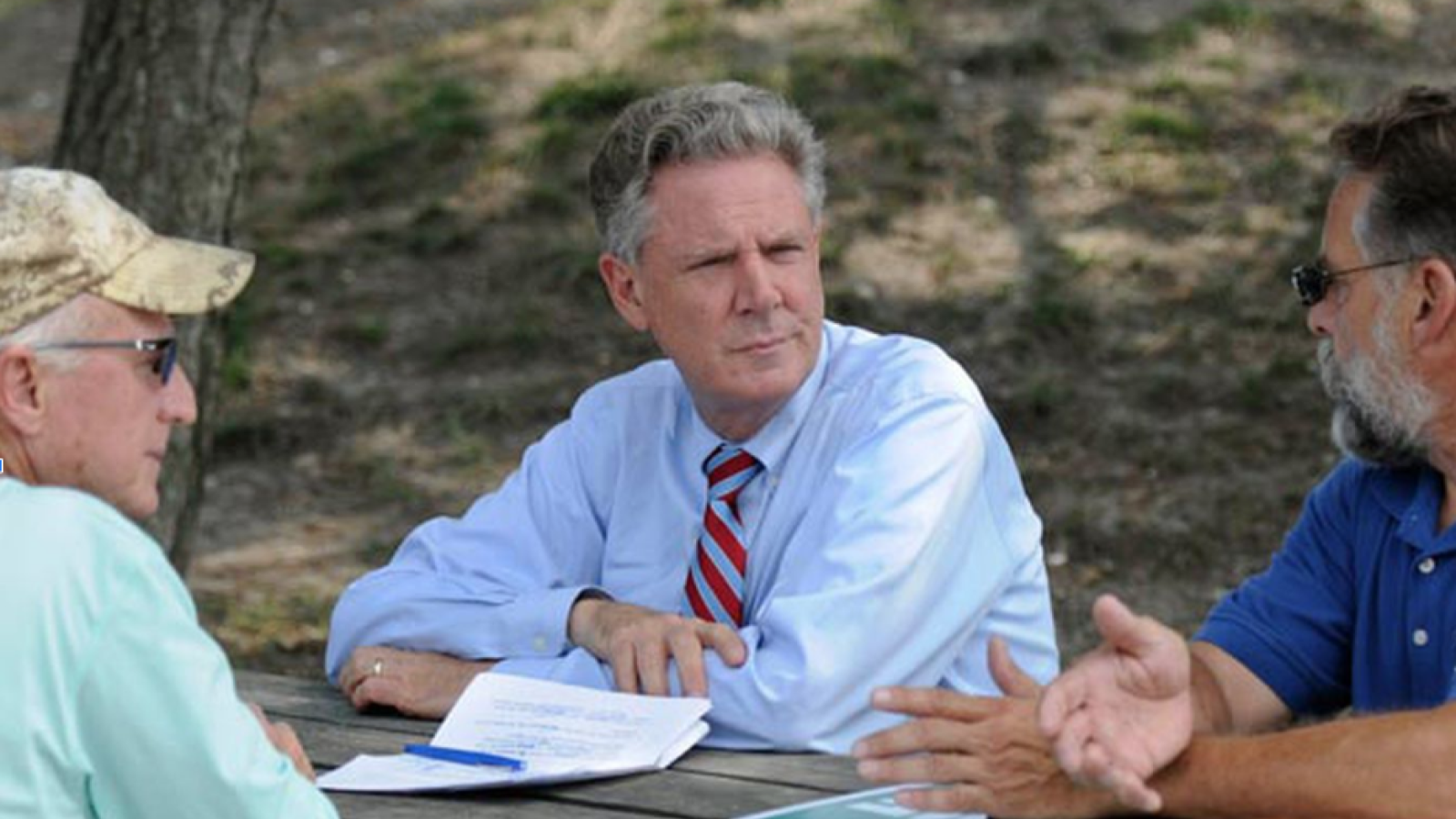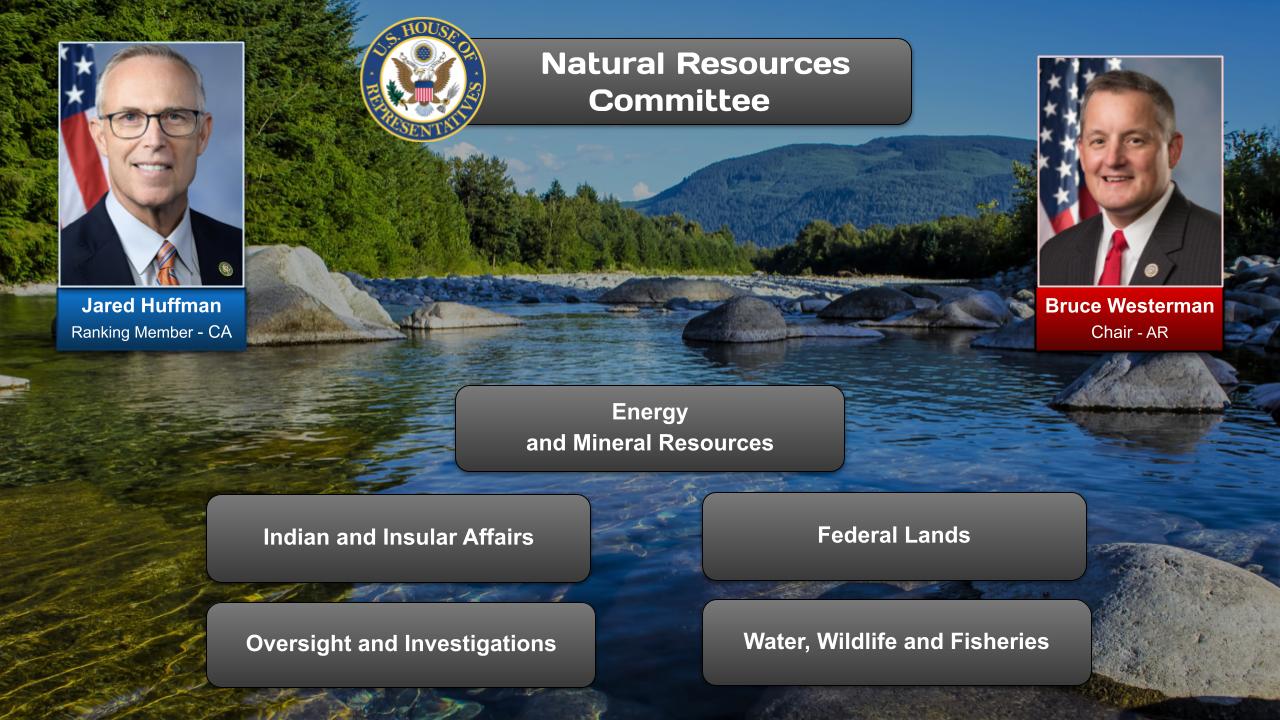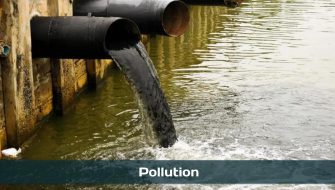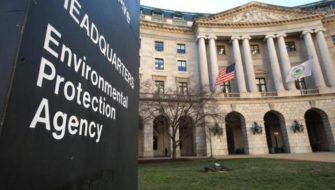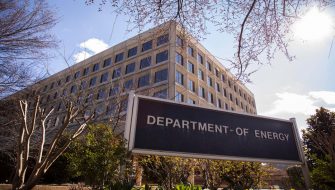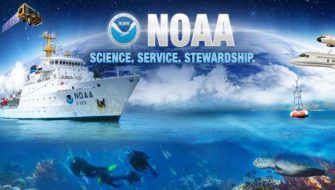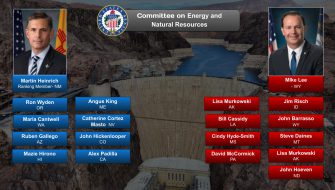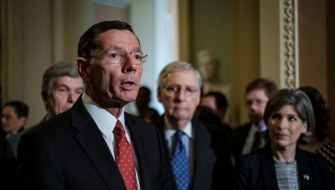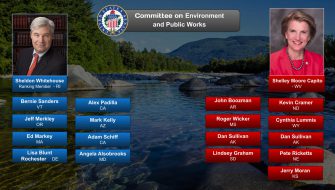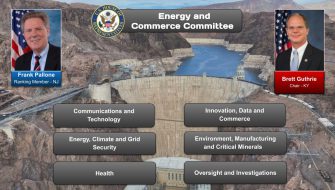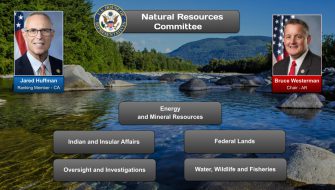Summary
Pollution is the introduction of contaminants into the natural environment that cause adverse change. Pollution can take the form of any substance (solid, liquid, or gas) or energy (such as radioactivity, heat, sound, or light). Pollutants, the components of pollution, can be either foreign substances/energies or naturally occurring contaminants.
- In the ‘About’ section of this post is an overview of the issues or challenges, potential solutions, and web links. Other sections have information on relevant legislation, committees, agencies, programs in addition to information on the judiciary, nonpartisan & partisan organizations, and a wikipedia entry.
- To participate in ongoing forums, ask the post’s curators questions, and make suggestions, go to the ‘Discuss’ section at the bottom of the post.
The Pollution category has related posts on government agencies and departments and committees and their Chairs.
04/08/2020 (12:05)
North Carolina’s Cape Fear River is a massive water system. It stretches across the lower half of the state, collecting runoff from 29 counties and providing water to millions of people. But in the city of Wilmington, where the river meets the Atlantic Ocean, the water has residents worried. In a 2019 test of tap water, Wilmington and neighboring Brunswick county were among the top five areas for high levels of PFAS, or per- and polyfluoroalkyl substances — a group of man-made chemicals commonly used for making nonstick or water-resistant products.
Now North Carolina is reckoning with the legacy of pollution upstream — and discovering what decades of PFAS contamination means for the rest of the country.
OnAir Post: Pollution
News
Latest
PBS NewsHour – April 9, 2024 (05:16)
https://www.youtube.com/watch?v=yl1VFPWDcGs
In our news wrap Tuesday, the Environmental Protection Agency is cracking down on pollution from chemical plants, Norfolk Southern has agreed to pay $600 million to settle a lawsuit over last year’s train derailment in East Palestine, Ohio, and the parents of Ethan Crumbley, the teenager who killed four of his Michigan schoolmates in 2021, have been sentenced to up to 15 years in prison.
Spotlight
PBS NewsHour – April 9, 2024 (05:16)
https://www.youtube.com/watch?v=yl1VFPWDcGs
In our news wrap Tuesday, the Environmental Protection Agency is cracking down on pollution from chemical plants, Norfolk Southern has agreed to pay $600 million to settle a lawsuit over last year’s train derailment in East Palestine, Ohio, and the parents of Ethan Crumbley, the teenager who killed four of his Michigan schoolmates in 2021, have been sentenced to up to 15 years in prison.
Videos
PBS NewsHour – April 9, 2024 (05:16)
https://www.youtube.com/watch?v=yl1VFPWDcGs
In our news wrap Tuesday, the Environmental Protection Agency is cracking down on pollution from chemical plants, Norfolk Southern has agreed to pay $600 million to settle a lawsuit over last year’s train derailment in East Palestine, Ohio, and the parents of Ethan Crumbley, the teenager who killed four of his Michigan schoolmates in 2021, have been sentenced to up to 15 years in prison.
About
Overview
Check the Energy & Environment post for the party positions, committees, government agencies related to Pollution and Energy & Environment issues.
Problem
Air Pollution
- Health impacts: Air pollution is a major contributor to respiratory diseases, cardiovascular disease, and cancer. It also impairs cognitive function and can lead to premature death.
- Environmental impacts: Air pollution can damage crops, forests, and aquatic ecosystems. It can also contribute to climate change by trapping heat in the atmosphere.
- Economic impacts: Air pollution can reduce worker productivity, damage infrastructure, and lower property values.
2. Water Pollution
- Health impacts: Water pollution can cause a wide range of health problems, including gastrointestinal distress, skin infections, and neurological damage. It can also lead to outbreaks of waterborne diseases such as cholera and typhoid.
- Environmental impacts: Water pollution can damage aquatic ecosystems, contaminate drinking water sources, and make water unsafe for swimming or fishing.
- Economic impacts: Water pollution can harm tourism, fishing, and other industries that rely on clean water.
3. Soil Pollution
- Health impacts: Soil pollution can expose people to toxic chemicals that can cause health problems such as cancer, reproductive disorders, and developmental delays.
- Environmental impacts: Soil pollution can damage soil ecosystems, reduce crop yields, and contaminate groundwater.
- Economic impacts: Soil pollution can reduce land values and make land less suitable for farming or other uses.
4. Noise Pollution
- Health impacts: Noise pollution can cause hearing loss, sleep disturbance, stress, and cardiovascular disease. It can also interfere with cognitive function and speech perception.
- Environmental impacts: Noise pollution can disrupt animal behavior and migration patterns.
- Economic impacts: Noise pollution can reduce worker productivity and property values.
5. Light Pollution
- Health impacts: Light pollution can disrupt sleep patterns, suppress melatonin production, and increase the risk of obesity, diabetes, and other chronic diseases.
- Environmental impacts: Light pollution can interfere with the behavior of nocturnal animals and disrupt ecosystems.
- Economic impacts: Light pollution can increase energy consumption and reduce the visibility of stars and other celestial objects.
Solutions
Air Pollution
- Reduce emissions from vehicles: Transition to electric vehicles, implement stricter emission standards, promote public transportation.
- Promote renewable energy: Shift from fossil fuels to solar, wind, and other renewable sources.
- Improve energy efficiency: Implement energy-efficient appliances, buildings, and industrial practices.
- Control industrial emissions: Enforce stricter regulations, install pollution control equipment, and promote cleaner production processes.
- Plant trees and vegetation: Forests and plants absorb carbon dioxide and release oxygen, improving air quality.
Water Pollution
- Control sewage and wastewater discharge: Upgrade wastewater treatment facilities, reduce runoff from agricultural areas, and enforce regulations against illegal dumping.
- Promote water conservation: Encourage efficient water use in homes, industries, and agriculture.
- Reduce agricultural runoff: Implement best farming practices to minimize fertilizer and pesticide pollution.
- Restore and protect wetlands: Wetlands act as natural filters, removing pollutants from water.
- Monitor and regulate industrial effluents: Enforce strict regulations and invest in technology to reduce industrial wastewater pollution.
Soil Pollution
- Reduce fertilizer and pesticide use: Promote sustainable agriculture practices, including integrated pest management and organic farming.
- Remediate contaminated sites: Clean up areas polluted by hazardous waste, industrial spills, and improper waste disposal.
- Control soil erosion: Implement erosion control measures, such as terracing, cover crops, and buffer zones.
- Promote organic waste management: Compost organic waste and use it to improve soil health.
- Increase green spaces: Establish urban gardens, parks, and other green areas to absorb pollutants and improve air and soil quality.
Noise Pollution
- Enforce noise regulations: Establish and enforce limits on noise levels from construction, traffic, and industrial activities.
- Promote noise-absorbing materials: Use noise-reducing materials in building construction and road surfaces.
- Design quiet zones: Create designated areas, such as parks and residential areas, with reduced noise levels.
- Encourage soundproofing: Invest in soundproofing measures for homes, schools, and workplaces.
- Raise public awareness: Educate the public about the negative effects of noise pollution and encourage responsible noise behavior.
Plastic Pollution
- Reduce single-use plastics: Promote the use of reusable alternatives, such as reusable bags, water bottles, and containers.
- Improve waste management: Implement effective waste collection and recycling systems to reduce plastic waste.
- Promote recycling and composting: Encourage the recycling of plastic materials and the composting of biodegradable plastics.
- Develop innovative solutions: Invest in research and development of biodegradable and alternative plastic materials.
- Raise public awareness: Educate the public about the dangers of plastic pollution and encourage responsible plastic consumption.
Websites
Government and Non-Profit Organizations
- United States Environmental Protection Agency (EPA): https://www.epa.gov/
- World Health Organization (WHO): https://www.who.int/health-topics/air-pollution
- World Bank Group: Climate Change: https://www.worldbank.org/en/topic/climatechange
Research and Data
- European Environment Agency (EEA): https://www.eea.europa.eu/
- Stockholm Environment Institute (SEI): https://www.sei.org/
- Air Quality Now: https://aqicn.org/
- World Air Quality Index: https://www.waqi.info/
Policy and Regulation
- United Nations Environment Programme (UNEP): Climate Change and Environment: https://www.unenvironment.org/explore-topics/climate-change
- International Energy Agency (IEA): https://www.iea.org/
- Intergovernmental Panel on Climate Change (IPCC): https://www.ipcc.ch/
Technology and Innovation
- Global Environment Facility (GEF): https://www.thegef.org/topics/climate-change
- Green Climate Fund: https://www.greenclimate.fund/
- Mission Innovation: https://mission-innovation.net/
Community and Advocacy
- BreatheLife campaign: https://breathelife2030.org/
- Clean Air Alliance of China: https://www.cleanairalliance.org.cn/
- Friends of the Earth International: https://www.foei.org/
Education and Awareness
- Climate Education Partnership: https://climateeducationpartnership.org/
- Sustainable Energy for All: https://www.seforall.org/
- WWF: Pollution Solutions: https://www.worldwildlife.org/threats/pollution
Legislation
Overview
See Congress.Gov links below for latest updates and for learning what bills your representatives are sponsoring.
Laws
Source: Google Search + Gemini + onAir curation
Clean Air Act (CAA)
- Regulates air pollution from stationary and mobile sources.
- Establishes air quality standards and limits on emissions.
- Requires control technologies and pollution prevention measures.
Clean Water Act (CWA)
- Regulates water pollution from point sources (e.g., factories, wastewater treatment plants) and nonpoint sources (e.g., agricultural runoff).
- Establishes water quality standards and discharge limits.
- Provides for pollution control grants and compliance assistance.
Comprehensive Environmental Response, Compensation, and Liability Act (CERCLA)
- Also known as Superfund.
- Authorizes the cleanup of hazardous waste sites and requires responsible parties to pay for cleanup costs.
Resource Conservation and Recovery Act (RCRA)
- Regulates the management and disposal of hazardous waste.
- Establishes standards for waste storage, treatment, and disposal.
- Requires waste generators to develop waste management plans.
Toxic Substances Control Act (TSCA)
- Regulates the production, use, and disposal of chemicals.
- Requires testing and risk evaluation of new chemicals.
- Restricts the use of certain toxic substances.
Federal Water Pollution Control Act Amendments of 1972 (FWPCA)
- Extends the scope of CWA to include nonpoint source pollution.
- Establishes a goal of eliminating waterway discharges by 1985 (not fully achieved).
- Provides funding for wastewater treatment facilities.
Surface Mining Control and Reclamation Act (SMCRA)
- Regulates surface coal mining operations.
- Requires environmental restoration of mined areas.
- Sets standards for land reclamation and water protection.
Energy Policy Act of 2005
- Includes provisions to promote clean energy technologies, reduce greenhouse gas emissions, and address global climate change.
Energy Independence and Security Act of 2007
- Establishes goals for renewable energy production and energy efficiency.
- Includes provisions to reduce air pollution and mitigate climate change.
New Bills
Source: Google Search + Gemini + onAir curation
Sampling of Bills:
H.R.2562 — Air Traffic Noise and Pollution Expert Consensus Act of 2023
Sponsor: Lynch, Stephen F. [Rep.-D-MA-8] (Introduced 04/10/2023)
Cosponsors: (26)
Committees: House – Transportation and Infrastructure
Latest Action: House – 04/11/2023 Referred to the Subcommittee on Aviation. (All Actions)
H.R.6053 — Break Free From Plastic Pollution Act of 2023
Sponsor: Huffman, Jared [Rep.-D-CA-2] (Introduced 10/25/2023)
Cosponsors: (68)
Committees: House – Energy and Commerce; Transportation and Infrastructure; Foreign Affairs; Agriculture
Latest Action: House – 01/18/2024 Referred to the Subcommittee on Conservation, Research, and Biotechnology. (All Actions)
H.R.5983 — Clean Water Act of 2023
Sponsor: Larsen, Rick [Rep.-D-WA-2] (Introduced 10/18/2023)
Cosponsors: (130)
Committees: House – Transportation and Infrastructure
Latest Action: House – 10/27/2023 Referred to the Subcommittee on Water Resources and Environment. (All Actions)
S.1449 — RESTART Act
Sponsor: Capito, Shelley Moore [Sen.-R-WV] (Introduced 05/04/2023)
Cosponsors: (12)
Committees: Senate – Environment and Public Works
Latest Action: Senate – 05/04/2023 Read twice and referred to the Committee on Environment and Public Works. (All Actions)
Clean Air Act Amendments (H.R. X/S. X)
- Updates air quality standards and emission limits for criteria pollutants (e.g., particulate matter, ozone)
- Invests in clean energy infrastructure and technology
- Enhances enforcement mechanisms for air pollution violations
Clean Water Act Amendments (H.R. Y/S. Y)
- Strengthens protection for waterways from pollution sources (e.g., industrial runoff, agricultural operations)
- Provides funding for wastewater treatment plant upgrades
- Expands monitoring and enforcement capabilities
Resource Conservation and Recovery Act Modernization (H.R. Z/S. Z)
- Overhauls hazardous waste management regulations
- Promotes recycling and waste reduction
- Addresses emerging contaminants (e.g., PFAS)
Environmental Justice Act (H.R. A/S. A)
- Establishes an Environmental Justice Bureau at the EPA
- Requires consideration of environmental impacts on disadvantaged communities
- Provides funding for community-based environmental projects
Plastics Waste Reduction and Recycling Act (H.R. B/S. B)
- Sets targets for plastic waste reduction and recycling
- Imposes fees on single-use plastics
- Promotes investment in reusable and recyclable alternatives
Clean Energy Innovation and Deployment Act (H.R. C/S. C)
- Accelerates the transition to clean energy sources (e.g., solar, wind)
- Provides incentives for carbon capture and storage
- Promotes energy efficiency measures
National Environmental Policy Act Reform (H.R. D/S. D)
- Modernizes the National Environmental Policy Act (NEPA)
- Improves environmental impact assessment processes
- Requires consideration of climate change impacts
Climate Change Emergency Act (H.R. E/S. E)
- Declares a national climate emergency
- Mobilizes government resources to address climate change
- Sets ambitious emissions reduction targets
Toxic Substances Control Act Reauthorization (H.R. F/S. F)
- Updates the Toxic Substances Control Act (TSCA)
- Enhances chemical safety testing and regulation
- Restricts the use of harmful chemicals
Safe Drinking Water Act Amendments (H.R. G/S. G)
- Updates drinking water standards
- Provides funding for infrastructure improvements
- Addresses emerging water contaminants
COMMITTEES, AGENCIES, & PROGRAMS
Committees
Source: Google Search + Gemini + onAir curation
House of Representatives Committees
- Committee on Energy and Commerce
- Subcommittee on Environment and Climate Change
- Subcommittee on Clean Air and Nuclear Safety
- Committee on Natural Resources
- Subcommittee on Water, Oceans, and Wildlife
- Subcommittee on Energy and Mineral Resources
- Committee on Transportation and Infrastructure
- Subcommittee on Water Resources and Environment
- Subcommittee on Aviation
- Committee on Science, Space, and Technology
- Subcommittee on Environment
- Subcommittee on Energy
Senate Committees
- Committee on Environment and Public Works
- Subcommittee on Clean Air and Nuclear Safety
- Subcommittee on Water and Wildlife
- Subcommittee on Transportation and Infrastructure
- Committee on Energy and Natural Resources
- Subcommittee on Energy
- Subcommittee on Water and Power
- Committee on Commerce, Science, and Transportation
- Subcommittee on Oceans, Atmosphere, Fisheries, and Coast Guard
- Subcommittee on Science, Technology, Innovation, and Space
- Committee on Health, Education, Labor, and Pensions
- Subcommittee on Children and Families
Government Agencies
Source: Google Search + Gemini + onAir curation
Environmental Protection Agency (EPA)
- Primary federal agency responsible for enforcing environmental laws and regulations, protecting human health and the environment from pollution.
- Regulates air, water, land, and hazardous waste to reduce emissions, protect ecosystems, and enforce environmental standards.
Department of Energy (DOE)
- Promotes the development and use of clean energy technologies to reduce greenhouse gas emissions and air pollution.
- Supports research on carbon capture, renewable energy, and energy efficiency measures.
Department of Transportation (DOT)
- Regulates transportation emissions, including vehicle fuel efficiency standards and emissions limits.
- Promotes the use of public transportation, walking, and biking to reduce air pollution from traffic.
National Oceanic and Atmospheric Administration (NOAA)
- Monitors environmental conditions, including air and water quality, and provides data for climate research and policymaking.
- Tracks and forecasts pollution, including oil spills and harmful algal blooms.
Department of Health and Human Services (HHS)
- Conducts research on the health effects of pollution, including air pollution, water contamination, and hazardous waste exposure.
- Provides guidelines for protecting public health from environmental hazards.
Department of Agriculture (USDA)
- Manages national forests and grasslands to reduce air and water pollution.
- Promotes agricultural practices that mitigate greenhouse gas emissions and improve soil and water quality.
Department of the Interior (DOI)
- Protects national parks, forests, and other public lands, which play a vital role in air and water purification.
- Regulates offshore oil drilling and mining activities to minimize environmental impact.
National Aeronautics and Space Administration (NASA)
- Conducts research and monitors the Earth’s atmosphere and climate.
- Provides data and models to track air pollution, greenhouse gas emissions, and other environmental parameters.
EPA
Source: EPA
Our Mission
The mission of EPA is to protect human health and the environment.
EPA works to ensure that:
- Americans have clean air, land and water;
- National efforts to reduce environmental risks are based on the best available scientific information;
- Federal laws protecting human health and the environment are administered and enforced fairly, effectively and as Congress intended;
- Environmental stewardship is integral to U.S. policies concerning natural resources, human health, economic growth, energy, transportation, agriculture, industry, and international trade, and these factors are similarly considered in establishing environmental policy;
- All parts of society–communities, individuals, businesses, and state, local and tribal governments–have access to accurate information sufficient to effectively participate in managing human health and environmental risks;
- Contaminated lands and toxic sites are cleaned up by potentially responsible parties and revitalized; and
- Chemicals in the marketplace are reviewed for safety.
To accomplish this mission, we:
Develop and enforce regulations
When Congress writes an environmental law, we implement it by writing regulations. Often, we set national standards that states and tribes enforce through their own regulations. If they fail to meet the national standards, we can help them. We also enforce our regulations, and help companies understand the requirements.
Give grants
Nearly half of our budget goes into grants to state environmental programs, non-profits, educational institutions, and others. They use the money for a wide variety of projects, from scientific studies that help us make decisions to community cleanups. Overall, grants help us achieve our overall mission: protect human health and the environment.
Study environmental issues
At laboratories located throughout the nation, we identify and try to solve environmental problems. To learn even more, we share information with other countries, private sector organizations, academic institutions, and other agencies.
Sponsor partnerships
We don’t protect the environment on our own. We work with businesses, non-profit organizations, and state and local governments through dozens of partnerships. A few examples include conserving water and energy, minimizing greenhouse gases, re-using solid waste, and getting a handle on pesticide risks. In return, we share information and publicly recognize our partners.
Teach people about the environment
Protecting the environment is everyone’s responsibility, and starts with understanding the issues. The basics include reducing how much energy and materials you use, reusing what you can and recycling the rest. There’s a lot more about that to learn!
Publish information
Through written materials and this website, EPA informs the public about our activities.
What we don’t do
- The Endangered Species Act is primarily managed by the U.S. Fish and Wildlife Service.
- The Department of Energy Office of Environmental Management addresses the problem of nuclear waste.
Programs & Initiatives
Source: Google Search + Gemini + onAir curation
Air Pollution
- Clean Air Act (1963): Sets federal air quality standards and regulates emissions from stationary and mobile sources.
- National Ambient Air Quality Standards (NAAQS): Establish permissible levels of pollutants in the air.
- EPA’s Clean Air Technology Center: Provides technical assistance to industries on reducing air pollution.
Water Pollution
- Clean Water Act (1972): Regulates water quality in surface waters and sets effluent limits for industrial and municipal wastewater.
- Safe Drinking Water Act (1974): Establishes drinking water standards and regulates public water supply systems.
- National Pollutant Discharge Elimination System (NPDES): Permits and regulates wastewater discharges into waterways.
Land Pollution
- Comprehensive Environmental Response, Compensation, and Liability Act (CERCLA) (Superfund): Addresses hazardous waste spills and clean-ups at contaminated sites.
- Resource Conservation and Recovery Act (RCRA): Regulates the generation, transportation, treatment, and disposal of hazardous waste.
- Brownfields Revitalization and Environmental Restoration Act: Provides incentives and assistance for redeveloping contaminated sites.
Climate Change Mitigation and Adaptation
- Clean Power Plan: Aims to reduce carbon pollution from power plants.
- Paris Agreement: A global agreement to limit greenhouse gas emissions and mitigate climate change.
- National Climate Assessment: Periodic reports that assess the impacts of climate change on the United States.
Research and Development
- Environmental Protection Agency (EPA): Conducts research on environmental pollution and develops regulations and programs.
- National Science Foundation (NSF): Supports scientific research and innovation in environmental science and engineering.
- Department of Energy (DOE): Develops technologies for cleaner energy and carbon dioxide capture and storage.
International Cooperation
- United Nations Environment Program (UNEP): Coordinates international efforts to address environmental issues.
- Montreal Protocol: A global agreement to phase out ozone-depleting substances.
- Kyoto Protocol: An international agreement to reduce greenhouse gas emissions.
Other Initiatives
- Environmental Justice: Ensures that all communities have equal access to environmental protection.
- Green Infrastructure: Uses natural and engineered systems to manage stormwater and reduce pollution.
- Pay-for-Performance Programs: Rewards industries for reducing pollution.
Government Partnerships to Reduce Air Pollution
Source: EPA
The Clean Air Act calls for state, local, federal and tribal governments to implement the Act in partnership to reduce pollution. Roles vary depending on the nature of the air pollution problem.
Government partnerships for:
- Common Pollutants
- Air Toxics
- Acid Rain
- Ozone Layer Protection
- Regional Haze
- Operating Permits
- Tribal Governments
For Common Pollutants: A State-EPA Partnership
For common pollutants, the law requires EPA to establish health-based national air quality standards to protect people with an “adequate margin of safety.”
States are responsible for developing enforceable state implementation plans to meet the standards. In some states such as California, local air pollution districts work with the state to produce air quality plans. Each state plan also must prohibit emissions that significantly contribute to air quality problems in a downwind state.
EPA provides guidance and technical assistance to assist state planning, issues national emissions standards for new stationary sources, and reviews state plans to ensure that they comply with the Act. Preconstruction permits are required for major new and modified stationary sources. In most areas, state or local air agencies serve as the CAA permitting authority. Elsewhere, EPA is the permitting authority.
For Toxic Pollutants: National Standards with a Role for States
For Acid Rain: A Federal Program
Congress established a federal acid rain program to cut acid-rain forming emissions from power plants that cross state lines. The law required EPA to issue the implementing rules, track the trading of emissions allowances, and monitor compliance. Learn more about the Acid Rain Program
For Ozone Layer Protection: National Requirements
Congress charged EPA with issuing and enforcing rules to phase out production of ozone-depleting chemicals and to ensure proper recycling, disposal and labeling of these chemicals. Learn more about requirements to protect the ozone layer
For Regional Haze: State Plans under EPA Guidance
Congress called for states to adopt enforceable plans to reduce pollutants that damage visibility in national parks and other protected areas. EPA issues guidance on state planning and required controls, and reviews state plans to ensure that they comply with the Act. Learn more about EPA’s regional haze program
For Operating Permits: States Usually in the Lead
The CAA requires major stationary sources and certain other sources subject to federal standards to obtain CAA operating permits that contain and assure compliance with all their CAA requirements. In most areas, state or local air agencies issue the permits. Elsewhere, EPA or a tribal government is the permitting authority. Learn more about operating permits
More Information
Judiciary
Source: Bard AI + onAir curation
Key Roles of the Judiciary in Pollution Matters
- Interpretation of Environmental Laws: Courts are tasked with interpreting and applying environmental laws, such as the Clean Air Act, Clean Water Act, and Superfund. Their rulings help to clarify the scope and intent of these laws, providing guidance to regulatory agencies and potentially shaping environmental policy.
- Adjudication of Pollution Disputes: When disputes arise over pollution-related issues, the judiciary often serves as the final arbiter. This can involve cases where individuals, businesses, or environmental groups sue polluters for damages or seek injunctive relief to prevent further pollution.
- Enforcement of Environmental Regulations: Courts can play a vital role in enforcing environmental regulations. They may issue orders requiring polluters to comply with specific regulations or impose penalties for violations.
- Development of Common Law: In some cases, the judiciary may develop common law principles related to pollution. This can involve establishing legal duties or remedies that are not explicitly covered by existing statutes.
Challenges and Considerations
Despite its important role, the judiciary faces several challenges in addressing pollution-related issues:
- Scientific Complexity: Pollution can involve complex scientific and technical questions that can be difficult for judges to understand and evaluate.
- Economic Implications: Pollution control measures often have significant economic implications, and courts may need to balance environmental concerns with the need to protect jobs and economic growth.
- Political Influence: Environmental issues can be highly politicized, and courts may face pressure from various interest groups to rule in their favor.
- Limitations of Judicial Remedies: While courts can order polluters to take corrective actions, they may be limited in their ability to fully address the environmental damage that has already occurred.
Examples of Judicial Involvement
- United States v. Chevron Corp.: This case involved a dispute over the Clean Water Act and the definition of “navigable waters.” The Supreme Court’s ruling had significant implications for the scope of federal jurisdiction over water pollution.
- Massachusetts v. EPA: The Supreme Court ruled that the EPA had a duty to regulate greenhouse gas emissions under the Clean Air Act, a decision that had far-reaching consequences for climate change policy.
- Individual lawsuits: Numerous lawsuits have been filed against polluters by individuals, businesses, and environmental groups seeking compensation for pollution-related damages or injunctive relief.
In conclusion, the judiciary plays a critical role in addressing pollution-related issues. By interpreting environmental laws, adjudicating disputes, enforcing regulations, and developing common law, courts can help to protect public health and the environment. However, the judiciary also faces challenges, and the effectiveness of its efforts depends on factors such as the strength of environmental laws, the availability of scientific evidence, and the willingness of parties to cooperate.
Nonpartisan Organizations
Source: Google Search + Gemini + onAir curation
- Environmental Protection Agency (EPA): A federal agency responsible for protecting human health and the environment. Its programs focus on air pollution, water pollution, hazardous waste, and Superfund site cleanups.
- Natural Resources Defense Council (NRDC): A nonprofit environmental advocacy group that works to protect natural resources and public health. It focuses on issues such as climate change, clean water, clean air, and wildlife conservation.
- Sierra Club: A nonprofit environmental organization that focuses on protecting the environment through advocacy, litigation, and grassroots organizing. It has over 3 million members and has been active in environmental protection for over a century.
- Audubon Society: A nonprofit organization dedicated to protecting birds and their habitats. It conducts research, does advocacy, and educates the public about the importance of birds.
- National Wildlife Federation: A nonprofit organization dedicated to protecting wildlife and their habitats. It does research, does advocacy, and educates the public about the importance of wildlife.
- United Nations Environment Programme (UNEP): A global organization that works to protect the environment. It sets standards, provides technical assistance, and promotes cooperation among countries on environmental issues.
- World Health Organization (WHO): A global organization that works to protect human health. Its programs include monitoring air pollution, water pollution, and climate change, and provides guidance on how to reduce their impacts on health.
Partisan Organizations
Source: Google Search + Gemini + onAir curation
Democratic Organizations:
- Environmental Defense Fund (EDF): A science-based organization that works to protect the environment by advocating for policies that address climate change, air pollution, and water contamination.
- Sierra Club: The oldest and largest environmental organization in the United States, with a focus on protecting public lands, conserving wildlife, and promoting clean energy.
- League of Conservation Voters (LCV): A political organization that supports candidates who prioritize environmental protection and holds elected officials accountable for their environmental records.
- Natural Resources Defense Council (NRDC): A legal and policy-based organization that uses science and law to protect human health and the environment.
Republican Organizations:
- American Conservation Coalition (ACC): A non-profit organization that promotes free-market solutions to environmental challenges, focusing on policies that support conservation, stewardship, and property rights.
- ConservAmerica: A conservative environmental organization that works to promote responsible energy development, clean air and water, and sustainable land use.
- Republican Environmental Policy Institute (REPI): A think tank that provides research and analysis on environmental issues from a conservative perspective.
- American Council for Capital Formation (ACCF): A non-profit organization that advocates for policies that promote economic growth and job creation, while considering environmental concerns.
“Pollution in the US” (Wiki)
- What links here
- Related changes
- Upload file
- Permanent link
- Page information
- Cite this page
- Get shortened URL
- Download QR code
- Download as PDF
- Printable version
- Wikimedia Commons
- Wikidata item
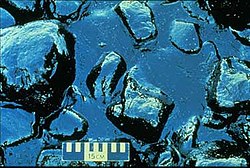
As with many countries, pollution in the United States is a concern for environmental organizations, government agencies, and individuals.
Billions of pounds of toxic chemicals are released into the air, land, and waterways in the U.S. each year. In 2019, approximately 21,000 facilities reported releasing 2.16 billion pounds of these chemicals onto land, 580 million pounds into the air, and 201 million pounds into water sources. Exposure to these pollutants can lead to various health problems, from short-term symptoms like headaches and temporary nervous system effects (e.g., “metal fume fever”) to serious long-term risks such as cancer and early death.[1]
Pollution from U.S. manufacturing has declined massively since 1990 (despite an increase in production). A 2018 study in the American Economic Review found that environmental regulation is the primary driver of the reduction in pollution.[2]
Land can be polluted in two main ways: through the introduction of harmful chemical substances or through physical changes that make the land less useful or sustainable for future use. Waste management is always connected to land in some form, whether it involves calculating how much land is needed for a landfill to store a town’s waste over the next 25 years, finding ways to protect important farmland from being taken out of production, or cleaning up abandoned waste sites that pose environmental risks. Waste managers are responsible for handling all these challenges, ensuring that land is used responsibly and that pollution is controlled.[3]
Examples of land pollution include:
Superfund
Air pollution is caused predominantly by burning fossil fuels, cars, and much more.[4] Natural sources of air pollution include forest fires, volcanic eruptions, wind erosion, pollen dispersal, evaporation of organic compounds, and natural radioactivity. These natural sources of pollution often soon disperse and thin settling near their locale. However, major natural events such as volcanic activity can convey throughout the air spreading, thinning, and settling over continents.[5] Fossil fuel burning for heating, electrical generation, and in motor vehicles are responsible for about 90% of all air pollution in the United States.[6]
The issue of greenhouse gas emissions and climate change is inherently global in nature, transcending national borders and affecting countries worldwide, including the United States. The impact of greenhouse gas emissions is not solely determined by the actions of any single nation; rather, it is the result of cumulative emissions from multiple countries. While the U.S. contributes significantly to global emissions, the connection of the global economy means that efforts to mitigate climate change must involve international cooperation. The emissions of other countries, particularly rapidly industrializing nations, also influence the overall trajectory of climate change. Therefore, the United States faces the challenge of both reducing its own emissions and addressing the broader global dynamics that contribute to the problem, making it difficult to fully control the spread of climate-related issues on a national level.[7][8]
Freshwater
In a report published in the November 12, 2008 online issue of Environmental Science and Technology, researchers found that freshwater pollution by phosphorus and nitrogen costs U.S. government agencies, drinking water facilities and individual Americans at least $4.3 billion annually. Of that, they calculated that $44 million a year is spent just protecting aquatic species from nutrient pollution.[9] Currently, all through the United States, more than half of the rivers and lakes that span through the country don’t meet standards required from environmental regulations. A large percentage of individuals living throughout America receive drinking water from such sources in which don’t meet regulations for safe water to use.[10] Pollution from nitrogen and phosphorus in freshwater not only harms ecosystems but also costs Americans money, according to Kansas State University researchers. These pollutants, often from agricultural runoff, contribute to higher water treatment costs, increased bottled water expenses, and lower property values for lakeside homes. Additionally, recreational activities like fishing and boating can decline, hurting local economies. The researchers estimate that this pollution costs the U.S. at least $4.3 billion annually, with $44 million spent each year to protect aquatic species from nutrient pollution.[9]
Trace chemicals are common in both marine and freshwater ecosystems, but they are rarely found alone. Research on which chemicals often occur together and the best ways to identify these mixtures has been limited. In our study, we found that simple correlation analysis is more effective than principal component analysis (PCA) at identifying chemical mixtures. Unlike PCA, correlation analysis can handle unbalanced data and values below detection limits.[11]
Using this approach, we identified 10 common groups of chemicals that often appear together in U.S. freshwater systems. This method helps better understand how these chemical combinations affect aquatic environments. Our research shows that correlation analysis is a better tool for identifying co-occurring pollutants, based on data from 406 chemicals across 38 locations in the continental U.S.[11]
Furthermore, underwater pollution can lead to carcinogenic and non-carcinogenic effects to many individuals who are exposed to these pollutants[12]
Oceans
Oils
- 1969 Santa Barbara oil spill
- 2007 San Francisco Bay oil spill
- 2008 New Orleans oil spill
- 1989 Exxon Valdez oil spill
- 2010 Deepwater Horizon oil spill
Reducing pesticide pollution is a global priority. In this study, we analyzed a dataset of 21.4 million geo-referenced grid cells to understand the factors driving differences in pesticide pollution risk across countries. We found that about one-third of these differences are due to variations in agricultural systems and policies, with key factors being pesticide regulations, the share of organic farming, and crop types. We also discovered a trade-off between pesticide pollution and soil erosion in the Americas and Asia, but not in other regions.[13] The use of DDT and its consequences as a pollutant is attributed as sparking the environmental movement in the United States.
Plastic Waste
In a 2015 study, the scientists also published a chart listing the top 20 nations contributing plastic waste, which has since been widely circulated. The top five plastic polluters included China, Indonesia, the Philippines, Vietnam, and Thailand. The United States ranked twentieth, the only wealthy nation on the list.[14] “We were not attempting to re-do the 2015 study,” says Kara Lavender Law, a marine scientist at the Sea Education Association in Woods Hole, Massachusetts, and the new study’s lead author. “The whole point was to examine the United States.”[14] Analysing, 2016 data, the team found that as much as 3 percent of all plastic waste generated in the U.S. was either littered or illegally dumped in the environment. In all, the United States contributed up to 2.24 million metric tons into the environment in 2016, and of that, more than half—1.5 million metric tons—was along coastlines, meaning it had a high probability of slipping into the oceans.[14]
Plastic pollution is wreaking havoc on both the environment and human health. Microplastics, which come from the breakdown of plastic waste, are now found in 26% of marine fish—double the amount from just a decade ago. This environmental damage extends to wildlife, with species like turtles, fish, and seabirds suffering from ingesting plastic. The cost of these ecological impacts is estimated to be between $1.86 trillion and $268.5 billion by 2040.[15]
The financial burden of plastic waste management is also massive, with global costs for collecting, sorting, recycling, and disposing of plastics expected to range from $643 billion to $1.61 trillion by 2040. On top of this, plastics pose a growing human health crisis, with illnesses linked to plastic chemicals costing the U.S. between $384 billion and $403 billion annually. This combination of environmental and health-related costs highlights the urgent need to address the plastics crisis.[15]
Landfills
In the U.S., landfilling remains a common waste management method, with municipal, industrial, and hazardous waste landfills being the most prevalent, along with some emerging green waste landfills. While most landfills in the U.S. are regulated and engineered, illegal dumpsites still exist in certain areas. Landfilling can lead to several environmental and health issues, including contamination of groundwater from leachate, air pollution from airborne particles, odor pollution from municipal solid waste, and even marine pollution from runoff. This study explores these challenges within the U.S. context.[16]
Polystyrene
Worldwide there are numerous environmental organizations attempting to ban the use of polystyrene. One such organization in the U.S. is Californians Against Waste.[17] The city of Berkeley, California, was one of the first cities in the world to ban polystyrene food packaging (called Styrofoam in the media announcements).[18][19] It was also banned in Portland, Oregon and Suffolk County, New York in 1990.[20] Now, over 20 US cities have banned polystyrene food packaging, including Oakland, California, on Jan 1, 2007.[19] San Francisco introduced a ban on the packaging on June 1, 2007:[21] Board of Supervisors President Aaron Peskin noted:
“This is a long time coming. Polystyrene foam products rely on nonrenewable sources for production, are nearly indestructible and leave a legacy of pollution on our urban and natural environments. If McDonald’s could see the light and phase out polystyrene foam more than a decade ago, it’s about time San Francisco got with the program.”[22]
The overall benefits of the ban in Portland, Oregon have been questioned,[23] as have the general environmental concepts of the use of paper versus polystyrene.[24] The California and New York state legislatures are currently considering bills which would effectively ban expanded polystyrene in all takeout food packaging statewide.[25]
The United States Environmental Protection Agency (EPA) is an agency of the federal government of the United States charged with protecting human health and with safeguarding the natural environment: air, water, and land. The EPA was proposed by President Richard Nixon and began operation on 2 December 1970, when it was passed by Congress, and signed into law by President Nixon, and has since been chiefly responsible for the environmental policy of the United States.
State-level environmental policy, especially in clean air regulation, plays a key role in enforcement, air quality monitoring, and setting pollution standards that sometimes go beyond federal requirements set by the U.S. Environmental Protection Agency (EPA). However, environmental programs at the state level vary widely. Some states implement stricter air quality standards, others have stronger enforcement mechanisms, and some are known for their technical expertise in policy.[26]
To understand these differences, analysts often develop frameworks to measure and explain variations in state environmental programs. These frameworks typically assess the overall “greenness” or effectiveness of a state’s policy. However, these approaches can oversimplify the diverse goals of state programs by assuming that all states pursue a single, unified purpose.[26]
In reality, state environmental policy can be understood as having three distinct dimensions: (1) a focus on improving air quality, (2) the process of implementing and enforcing regulations, and (3) the collection and analysis of information necessary for policymaking. These dimensions are driven by different factors, and each state may prioritize them differently. Therefore, to better understand the differences in state-level environmental programs, it’s important to consider each dimension separately.[26]
The Biden administration has finalized new tailpipe pollution standards that aim to slash carbon emissions from new passenger vehicles by over half by 2032. While the U.S. transition to fully electric vehicles might take longer than initially anticipated, these updated rules are still expected to reduce carbon pollution by 7.2 billion tons through 2055—just 1 percent less than the original proposal. In the end, this will be one of Biden’s most impactful executive actions on climate change.[27]
The U.S. EPA has also announced nearly $330 million in Climate Pollution Reduction grants for Colorado as part of the Biden-Harris Administration’s Investing in America agenda. The Denver Regional Council of Governments (DRCOG) will receive $199.7 million for a zero-emission building initiative to reduce greenhouse gas emissions in the Denver area, aiming for net-zero emissions by 2050. The Colorado Energy Office (CEO) will receive $129 million to reduce methane emissions from landfills, coal mines, and other sources, and decarbonize commercial buildings. These projects aim to reduce air pollution, advance environmental justice, and support the clean energy transition in Colorado.[28]
Environmental justice is defined as “the fair treatment and meaningful involvement of all people regardless of race, color, sex, national origin, or income with respect to the development, implementation and enforcement of environmental laws, regulations, and policies” by the United States Environmental Protection Agency.[29] It is a social movement that aims to ensure all citizens have equal rights and opportunities to reside in a safe environment. The movement began in the 1980s as evidence was mounting that companies were targeting minority and low-income communities. Due to the lack of community action among minorities and low-come, corporations found little resistance when applying to build environmentally polluting factories.[30]
Executive Order 12898
On February 11, 1994, President William Clinton signed Executive Order 12898 “Federal Actions To Address Environmental Justice in Minority Populations and Low-Income Populations”. Its purpose was to create the “Interagency Working Group on Environmental Justice”. It provided directions to the “Working Group” on how to develop and manage an effective system for preventing environmental injustices. The “Working Group” was made up of various heads of federal agencies and tasked with creating guidelines for reporting, tracking, and developing regulations to curb environmental discrimination.[31]
Plan EJ 2014
In 2014, EPA has a strategy known as Plan EJ 2014. It is not, however, a rule or regulation.[32]
The goals of the plan are to:
• Protect health in communities over-burdened by pollution
• Empower communities to take action to improve their health and environment
• Establish partnerships with local, state, tribal and federal organizations to achieve healthy and sustainable communities.
The Toxic 100
Common offenders of environmental discrimination are corporations that build environmentally hazardous sites. These are typically waste processing facilities, energy companies such as coal plants, chemical plants, and manufacturers who use specific chemicals known to be hazardous to both the environment and/or human health. Other industries known for being responsible for negatively impacting the United States include transportation and energy mining and drilling. A list called The Toxic 100 is maintained by the Political Economy Research Institute (PERI), an institute at the university off Massachusetts Amherst, of the United States’ top polluters. PERI uses a formula: Emissions (millions of pounds) x Toxicity x Population Exposure. Population is measured by its proximity to nearby residents, as well as, prevailing winds and the height of smokestacks. The data on chemical releases come from the U.S. Environmental Protection Agency’s Toxics Release Inventory (TRI).[33]
The EPA and state agencies, like California’s, collect air quality data on the main pollutants regulated by the Clean Air Act, called “criteria” pollutants. These monitors help ensure air quality standards are met and also provide important data for studying pollution trends. The information shows significant improvements in air quality over recent decades. From 1980 to 2019, levels of carbon monoxide, lead, and sulfur dioxide dropped by over 80%, and particulate matter also decreased substantially. However, ground-level ozone levels only fell by about one-third.[34] Tracking emissions from specific activities or operations is more complicated than monitoring pollution levels in the air because emissions are influenced by factors like energy use, pollution control systems, equipment maintenance, weather, and management practices. Emissions can be estimated using engineering models or by directly sampling pollutants from things like smokestacks. Despite this complexity, data shows that emissions from sectors such as industry and transportation have decreased in line with overall reductions in air pollution. For example, between 1980 and 2019, carbon monoxide emissions fell by 75%, and sulfur dioxide emissions dropped by 92%.[34]
Levels of air and water pollutants that are measured and controlled have dropped substantially in recent decades, far more than CO2 emissions. However, this improvement should be interpreted with caution for several reasons. For one, while U.S. industries create thousands of chemicals, the Safe Drinking Water Act only covers around 95 of them. Furthermore, since most pollutants are regulated because they are actively monitored, pollutants that are not regulated may not have seen the same level of reduction.[35]
The bigger deduction in air pollution compared to CO2 emissions raises questions about how the two are related. Some studies suggest that reducing CO2 emissions can also lower air pollution, like when we switch from coal to natural gas or renewable energy, which reduces both. But this isn’t always the case. For example, pollution control devices like filters or exhaust cleaners may not reduce CO2 emissions and could even raise them because they need extra energy to operate. However, policies that reduce pollution might cut fossil fuel use, helping to lower both air pollution and CO2 emissions.[35]
The decrease in air pollution without a significant drop in CO2 seems to support the idea that policies aimed at reducing local pollutants don’t necessarily reduce CO2 emissions. This aligns with other studies showing that U.S. air pollution policies haven’t significantly impacted greenhouse gas emissions.[36]
- Cancer Alley
- Environment of the United States
- Environmental racism
- Environmental racism in Europe
- Uranium mining and the Navajo people
- List of Superfund sites
- Toxic 100 – the top 100 polluters in the US
- Regional Clean Air Incentives Market (RECLAIM, an emission trading scheme in California)
- Anderson v. Cryovac – a landmark federal case concerning toxic contamination in Woburn, Massachusetts
- Hexavalent chromium pollution in the United States
- ^ Toman, Elisa L. (2023-10-01). “Something in the air: Toxic pollution in and around U.S. prisons”. Punishment & Society. 25 (4): 867–887. doi:10.1177/14624745221114826. ISSN 1462-4745.
- ^ Walker, Reed; Shapiro, Joseph S. (2018). “Why Is Pollution from US Manufacturing Declining? The Roles of Environmental Regulation, Productivity, and Trade”. American Economic Review. 108 (12): 3814–3854. doi:10.1257/aer.20151272. ISSN 0002-8282.
- ^ Vallero, Daniel J.; Vallero, Daniel A. (2019-01-01), Letcher, Trevor M.; Vallero, Daniel A. (eds.), “Chapter 32 – Land Pollution”, Waste (Second Edition), Academic Press, pp. 631–648, doi:10.1016/b978-0-12-815060-3.00032-3, ISBN 978-0-12-815060-3, retrieved 2024-12-13
- ^ Shapiro, Susan G. (2005). Environment And Global Community. IDEA. ISBN 978-1932716122.
- ^ Miller, G. Tyler Jr. Living in the Environment. Belmont: Wadsworth Publishing Company, 1987.
- ^ Bloom, Paul R. ‘Environmental Encyclopedia. Acid Rain’ . Detroit: Gale Research International Limited, 1994.
- ^ US EPA, OAR (2015-12-23). “Overview of Greenhouse Gases”. www.epa.gov. Retrieved 2024-12-18.
- ^ US EPA, OAR (2016-01-12). “Global Greenhouse Gas Overview”. www.epa.gov. Retrieved 2024-12-19.
- ^ a b Freshwater Pollution Costs at Least $4.3 Billion Annually Newswise, Retrieved on November 28, 2008.
- ^ Keiser, David A.; Shapiro, Joseph S. (2019-11-01). “US Water Pollution Regulation over the Past Half Century: Burning Waters to Crystal Springs?”. Journal of Economic Perspectives. 33 (4): 51–75. doi:10.1257/jep.33.4.51. ISSN 0895-3309.
- ^ a b Marshall, Melanie M.; McCluney, Kevin E. (2021-01-01). “Mixtures of co-occurring chemicals in freshwater systems across the continental US”. Environmental Pollution. 268: 115793. doi:10.1016/j.envpol.2020.115793. ISSN 0269-7491.
- ^ Siddiqua, Ayesha; Hahladakis, John N.; Al-Attiya, Wadha Ahmed K. A. (2022-08-01). “An overview of the environmental pollution and health effects associated with waste landfilling and open dumping”. Environmental Science and Pollution Research. 29 (39): 58514–58536. Bibcode:2022ESPR…2958514S. doi:10.1007/s11356-022-21578-z. ISSN 1614-7499. PMC 9399006. PMID 35778661.
- ^ Wuepper, David; Tang, Fiona H. M.; Finger, Robert (2023-01-01). “National leverage points to reduce global pesticide pollution”. Global Environmental Change. 78: 102631. doi:10.1016/j.gloenvcha.2022.102631. hdl:20.500.11850/589298. ISSN 0959-3780.
- ^ a b c “U.S. generates more plastic trash than any other nation, report finds”. Environment. 2020-10-30. Archived from the original on June 12, 2021. Retrieved 2023-02-17.
- ^ a b Ignoring plastic pollution will cost us dearly (2024). (English ed.). ContentEngine LLC, a Florida limited liability company.
- ^ Siddiqua, Ayesha; Hahladakis, John N.; Al-Attiya, Wadha Ahmed K. A. (2022-08-01). “An overview of the environmental pollution and health effects associated with waste landfilling and open dumping”. Environmental Science and Pollution Research. 29 (39): 58514–58536. Bibcode:2022ESPR…2958514S. doi:10.1007/s11356-022-21578-z. ISSN 1614-7499. PMC 9399006. PMID 35778661.
- ^ “Business Gives Styrofoam a Rare Redemption”. Stockton Record. 21 September 2007. Retrieved 2007-10-09.
- ^ Young, Paul. “www.berkeleydaily.org » Admission Requirements At The University Of Berkeley | Berkeley Daily”.
- ^ a b Zamora, Jim Herron; Writer, Chronicle Staff (June 28, 2006). “Styrofoam food packaging banned in Oakland”. SFGate.
- ^ “Californians Against Waste website”. Archived from the original on June 8, 2009.
- ^ Goodyear, Charlie (November 7, 2006). “San Francisco / Committee approves ban on Styrofoam”. SFGate.
- ^ Goodyear, Charlie; Writer, Chronicle Staff (June 27, 2006). “SAN FRANCISCO / Styrofoam ban for restaurants proposed for ’07 / Business owners split on forced switch to eco-friendly options”. SFGate.
- ^ Eckhardt, Angela (November 1998). “Paper Waste: Why Portland’s Ban on Polystyrene Foam Products Has Been a Costly Failure” (PDF). Cascade Policy Institute. Archived from the original (PDF) on 2007-08-03. Retrieved 2007-10-23.
- ^ Thomas, Robert A. (March 8, 2005). “Where Might We Look for Environmental Heroes?”. Center for Environmental Communications, Loyola University, New Orleans. Archived from the original on 2007-10-13. Retrieved 2007-10-23.
- ^ “AB 904”. Archived from the original on May 15, 2009.
- ^ a b c Potoski, Matthew; Woods, Neal D. (2002). “Dimensions of State Environmental Policies”. Policy Studies Journal. 30 (2): 208–226. doi:10.1111/j.1541-0072.2002.tb02142.x. ISSN 1541-0072.
- ^ Lavelle, Marianne (2024-03-20). “Vehicle Carbon Pollution Would Be Cut, But More Slowly, Under New Biden Rule”. Inside Climate News. Retrieved 2024-12-13.
- ^ United states : BidenHarris administration announces 3287M for community driven solutions to cut climate pollution across Colorado (2024). . Disco Digital Media, Inc.
- ^ “Environmental Justice | US EPA”. Archived from the original on 2014-08-23. Retrieved 2014-08-15.
- ^ Pastor, Manuel (2001). Racial/Ethnic Inequality in Environmental-Hazard Exposure in Metropolitan Los Angeles. Berkeley, California: California Policy Research Center. p. 15.
- ^ “Archived copy” (PDF). Archived from the original (PDF) on 2016-03-04. Retrieved 2014-08-15.
{{cite web}}: CS1 maint: archived copy as title (link) - ^ “Archived copy” (PDF). Archived from the original (PDF) on 2015-09-24. Retrieved 2014-08-15.
{{cite web}}: CS1 maint: archived copy as title (link) - ^ “PERI: Toxic 100 Air Polluters 2013”. Archived from the original on 2015-11-18. Retrieved 2016-05-24.
- ^ a b Shapiro, Joseph S. (2022-01-01). “Pollution Trends and US Environmental Policy: Lessons from the Past Half Century”. Review of Environmental Economics and Policy. 16 (1): 42–61. doi:10.1086/718054. ISSN 1750-6816.
- ^ a b Shapiro, J. S. (2021). Pollution trends and US environmental policy: Lessons from the last half century. (). Cambridge: National Bureau of Economic Research. https://doi.org/10.3386/w29478
- ^ Shapiro, Joseph S (November 2021). “Pollution Trends and US Environmental Policy: Lessons from the Last Half Century”. National Bureau of Economic Research (NBER). NBER Working Paper No. w29478. Cambridge, Massachusetts. doi:10.2139/ssrn.3963706. OCLC 9332938017.
- United States Environmental Protection Agency – Pollution page
- Scorecard Home (data about pollution in the United States)
| Economy | |
|---|---|
| Education | |
| Environment | |
| Family | |
| Children | |
| Women | |
| Racism and racial inequality | |
| Crime | |
| Health | |
| Media | |
| Discrimination | |
| Other issues | |
External links
References
See also
The Current Trend
Environmental discrimination
Policy
Lobbying
Waste
Radioactivity
Pesticides
Water
Air
Land
Contents


